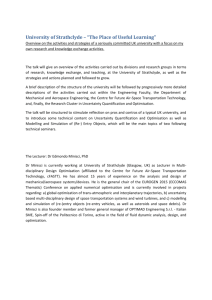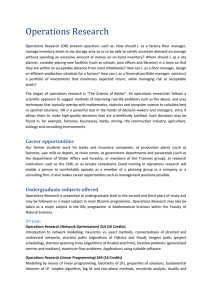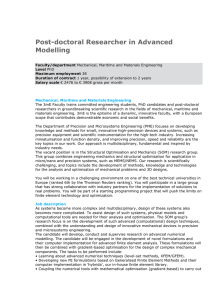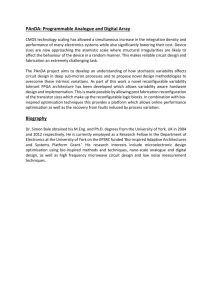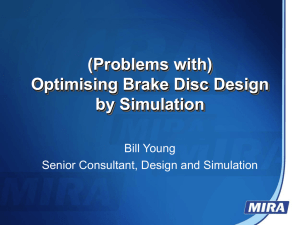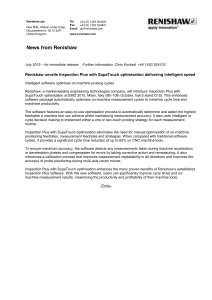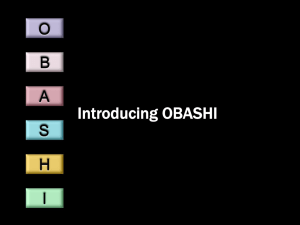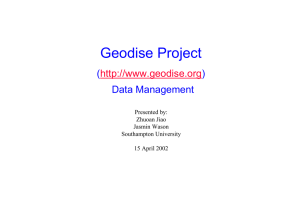COMPUTATIONAL METHODS AND OPTIMISATION
advertisement
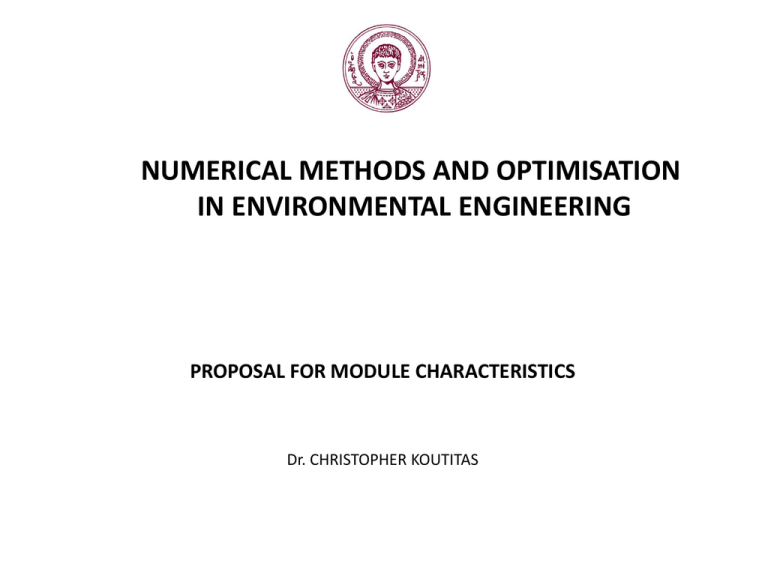
NUMERICAL METHODS AND OPTIMISATION IN ENVIRONMENTAL ENGINEERING PROPOSAL FOR MODULE CHARACTERISTICS Dr. CHRISTOPHER KOUTITAS Scope of the module • To introduce to the notion of computational models and operational software . • To point out the importance of models quality control • To present the basic methods of numerical analysis for the solution of ODE and PDE relevant to environmental sciences • To present the procedures towards the solution of most common equations in Environmental sciences • To refer to commonly used and available commercial or open environmental software packages • To introduce to the basic optimisation notions and problems and present the classical and modern optimisation techniques • To gain experience on using optimisation techniques for decision making in environmental management issues • COURSE DURATION 33 HRS Module contents • Chapter 1. Modelling basics Simplifying assumptions, parameterisations and model synthesis Models categorisation Models quality control , pre-processing and post processing From models to computer packages • Chapter 2. Methods and techniques of numerical analysis Fundamentals of FD method Convergence, stability, implicit and explicit schemes Initial and boundary conditions Monte Carlo methods, particles in place of the continuum • Chapter 3. Solution of fundamental ODE and PDE in environmental sciences Module contents Solution of Volterra equation, (nonlinear ODE) Solution of the transport equation (advection diffusion) Non steady flows and long waves equation Water quality equation (one or more reacting constituents) • Chapter 4. Application to water problems Flood propagation and sediments transport Water quality control Oil slick transport • Chapter 5. Application to air pollution Box and Gauss models Emission and fate of pollutants in lower atmosphere • Chapter 6. Application to biological problems (population dynamics) Module contents • Chapter 7. Optimisation methods Objective function, constrained and unconstrained optimisation Linear problems, Linear programming, Lagrange multipliers, Method of Steepest Descent Modern heuristic methods (Genetic algorithms, Particle swarm optimisation) Application to decision support for environmental management, selected case studies • Chapter 8. Available software packages Critical presentation of CEDES, WASP6, OSPM, AFTOX, POLYMATH etc The lecturer PhD in Sciences or Engineering with experience in CFD • Environmental Engineering • Civil Engineering • Chemical Engineering • Applied Mathematics • Biology or Physics with strong mathematical background Bibliography • • • • Elements of Computational Hydraulics, C. Koutitas, Chapman & Hall 1988 Introduction to Environmental Modelling, J. Smith. Oxford 2007 Population Ecology of Individuals Lomnicki, Princeton U., 1988 Environmental Modelling Software and Decision Support , A. Jakeman, 2008 • Fundamentals of Air Pollution, from processes to modelling, B. Sportisse, Springer 2009 • Engineering optimization, An introduction with meta-heuristic applications, Xin-She Yang, Wiley, 2010
